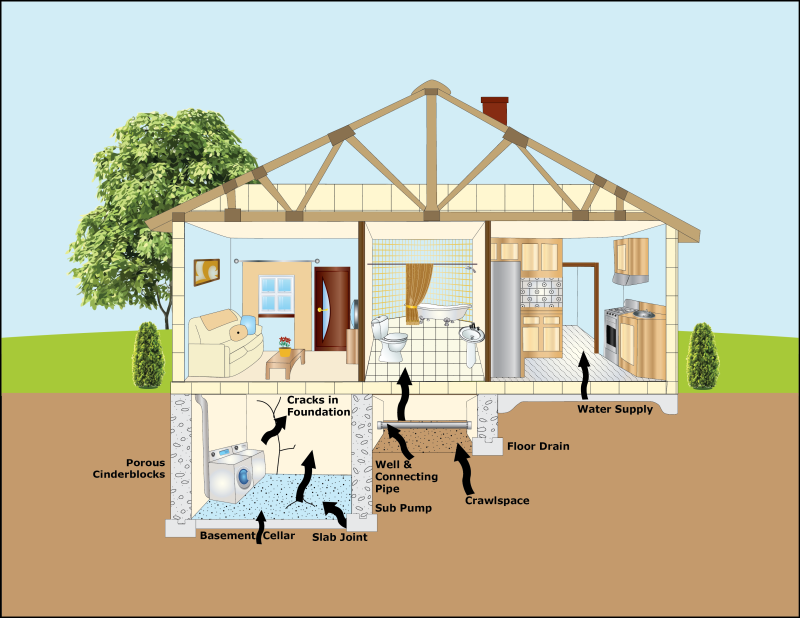Radon
Get your free Radon home test kit from the Bridgeport Health and Social Services Department!
Limited supplies available, visit us at 999 broad St from 9 a.m.-5p.m. Mon-Fri to pick up the test kit, instructions, and more information on Radon.
What is Radon?
Radon is a type of gas that is found in the air around us. It is colorless, odorless, and tasteless, which means that we can't see, smell, or taste it. Radon comes from the ground, where it is produced by the natural breakdown of uranium in rocks and soil.
When radon is released from the ground, it can enter our homes through small cracks in the foundation or walls. Once inside, it can build up and become harmful to our health. Radon is the second leading cause of lung cancer in the United States, after smoking.
The good news is that there are things we can do to reduce our exposure to radon. For example, we can test our homes to see if there is a high level of radon, and if there is, we can take steps to reduce it. By doing these things, we can protect ourselves and our families from the harmful effects of radon.

Testing for Radon
You can buy a radon test kit at a hardware store or online, or you can contact the Connecticut State Radon Program to find out where to get one. You can also order a low cost test kit from the American Lung Association of New England through their Radon Test Kit Store. There are two types of test kits: short-term and long-term. Short-term kits measure radon levels for a few days, while long-term kits measure levels for several months.
Once you have your test kit, you should follow the instructions that come with it. Typically, the kit will need to be placed in the lowest level of your home that you use for living. This could be a basement or a first-floor room. You should also keep the windows and doors closed as much as possible during the testing period.
After the test period is over, you will need to send the kit to a lab to have the results analyzed. The lab will send you a report with your radon levels. If your radon levels are high, there are steps you can take to reduce them.
How to Reduce Radon in Your Home
Here are some methods for reducing radon levels in your home:
- Ventilation: The most effective way to remove radon from a home is to increase ventilation. You can do this by installing a ventilation system that circulates fresh air into your home and exhausts contaminated air outside. An active ventilation system can reduce radon levels by up to 50%.
- Sealing cracks and gaps: Another way to reduce radon levels is to seal any cracks or gaps in your home's foundation and walls. This will prevent radon from seeping into your home. You can use caulk or foam sealant to seal the gaps.
- Installing a radon mitigation system: A radon mitigation system is a specialized system that uses a fan to draw radon gas out of the ground and vent it outside. This method can be very effective in reducing radon levels in a home. A licensed professional should install the system.
- Use of activated charcoal: Activated charcoal is a porous material that can absorb radon gas. You can use activated charcoal to reduce radon levels in a small area of your home, such as a basement or crawlspace. The activated charcoal should be replaced regularly.
Remember, the best way to remove radon from your home is to prevent it from entering in the first place. Make sure your home is well-ventilated and sealed properly to prevent radon from entering. If you suspect that radon is a problem in your home, it's important to have your home tested and take the necessary steps to reduce radon levels.
